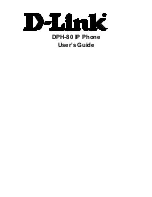
ENGLISH
2
2.2
Calls to a Fixed Phone Extension
■
some fixed extension phones cannot be called direct,
you need to connect to the exchange before dialling
the extension number. The phone will do all the
dialling for you with one key press provided that you
enter a pause (-) between the telephone (exchange)
number and the extension number. To enter a pause,
press three times (shown as
-
below)
AREA CODE
■
NUMBER
■
-
■
EXTENSION
■
,
(if used)
International Calls
■
unlike most fixed phones, you don ’t need to enter a
separate exit code to get an international line out of
the country you are calling from, simply enter ‘
+
’ (by
pressing until
+
is displayed), the code of the
country you are calling and the full telephone number
=
■
COUNTRY CODE
■
FULL NUMBER
■
,
■
for example, to make a call to France:
(
+
displayed
)
■
■
FULL NUMBER
■
,
Call List
■
called and received numbers are stored as a list in the
phone with the last number at the top of the list. Each
number is identified as outgoing, incoming, SMS or
missed. Old numbers are automatically deleted when
the call list is full. To see the list
,
(latest)
■
-
/
]
(search)
■
any displayed number on the list can be dialled by
pressing
,
■
the call list can be reset (cleared)
/
■
■
-
/
]
■
[
Making Calls
The network operator name must appear in the top left
of the display before you can make or receive calls.
Signal strength is indicated by the bars in the top right
of the display (six bars for optimum signal strength).
Call quality can be affected by physical obstructions,
so moving only a few metres may significantly improve
signal strength.
National Calls
■
if the country you are
operating in uses area
codes, they must be
included even when
making local calls.
‘CALLING’ appears during
dialling and changes to
‘ACTIVE’ when connected
AREA CODE
■
NUMBER
■
,
(if used)
■
to hang up at the end of the call press
\
or close the flip (even if the other person hangs up
first)
ENGLISH
2
2.1
DIALLED NUMBER
OPERATOR NAME
SIGNAL STRENGTH













































